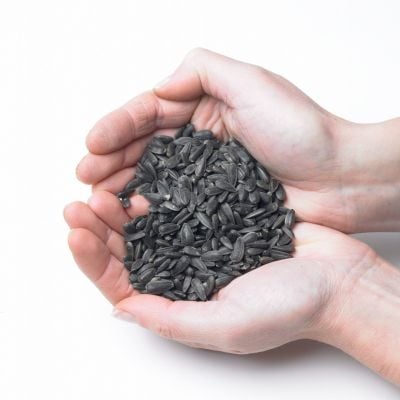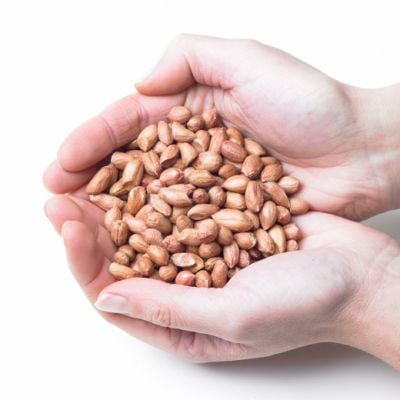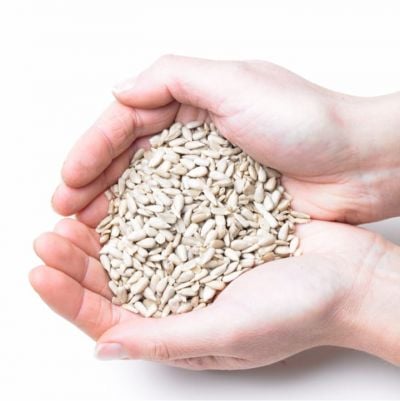Nuthatch Factfile
The Nuthatch is, perhaps, one of the most special birds to visit gardens. It has striking plumage of a steel grey back, black eye stripe, then pale orange-chestnut breast and underside. A relatively small bird of about 14cm long, it has an entertaining habit of moving headfirst down a tree trunk in search of food. Peanuts in a mesh feeder are a real favourite and the best way to attract the species to gardens.
Nuthatch nesting and breeding habits
The nest is built within a hole in a tree, plus nest boxes are sometimes taken. If the hole in the tree or nest box is too large, then both male and female birds may reduce its dimeter by plastering mud around it. The female bird prepares the lining to the nest, which is mainly made up of bark chips and dead leaves. There is usually one brood per year, though occasionally two, of between six and eight eggs. The female takes care of all the incubation but both parents tend the young which fledge the nest after about 25 days.
Nuthatch history and population trends
The Nuthatch has bucked the more general trend of songbird decline in the UK, and since the mid-1970s there has been a steady increase in the population and expansion of the breeding range. The breeding range expansion has been especially interesting, as the species has extended further north into areas including Cumbria and southern Scotland. The reasons for the expansion are not yet fully known, though climate change might be a factor in the species’ improved breeding success levels.
Behaviour traits of Nuthatches
Nuthatches are highly entertaining to watch, and, for example, are the only bird in the UK to routinely move down a tree head-first. They will also cache food for harder times, with black sunflower seeds taken from garden feeding stations an apparent favourite. Their exceptionally strong and sharp bill allows them to even crack open a hazel nut, with the nut firstly manoeuvred into a crevice in tree bark, before the bird hacks away at it until the shell is broken open. An especially interesting behaviour is that adult birds not only maintain a territory throughout the year, but also rarely venture from it throughout their adult life. Indeed, the expansion of the species’ range has only been achieved by young birds being forced out of the adults’ territory after they’ve fledged.
Nuthatch diet and food
In the spring and summer months the main food is tree-dwelling insects and their larvae, plus spiders and small snails. In the autumn and winter months the diet changes to mainly nuts and seeds, with the bird’s very strong and sharp bill being able to cope with hazel nuts, beech-mast and acorns. For the foods to put out for Nuthatches in the garden, peanuts in a mesh feeder are a real favourite, plus sunflower hearts and black sunflower seeds which they’ll more readily take from a ground feeder or table, rather than tube feeder.
What should I feed Nuthatches?
We recommend the following products to help attract Nuthatches to your garden.
Bird Food
Frequently Asked Questions
How do I attract Nuthatches to my garden?
If Nuthatches live in the area around your garden (the species doesn’t occur across the UK), then the best way to try and attract them is peanuts in a mesh feeder.
Where do Nuthatches go?
Mature deciduous trees are the key habitat requirement for Nuthatches, and therefore parks and gardens which have these and areas of very established woodland is where the species can be found.
Is a Nuthatch a Treecreeper?
No, the Nuthatch and Treecreeper are entirely different species, although some of their behaviour traits are similar – and notably moving up tree trunks looking for food (the Nuthatch can also go down a trunk headfirst which a Treecreeper can’t).
Will a Nuthatch use a nest box?
Yes, Nuthatches will use standard nest boxes (i.e. designed for species of tit and sparrow etc.), with the ideal opening hole being 32mm.
Is a Nuthatch a songbird?
Yes, Nuthatches are classed as a songbird, and indeed have an impressive and loud whistling song which rings out through even dense woodland.










